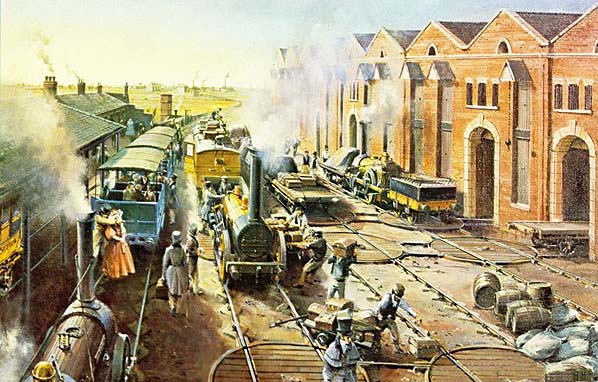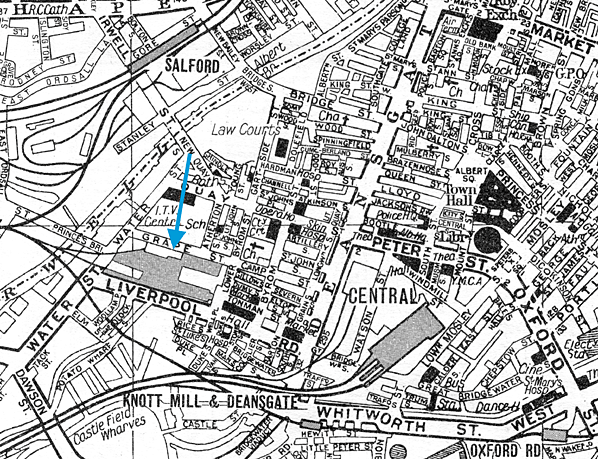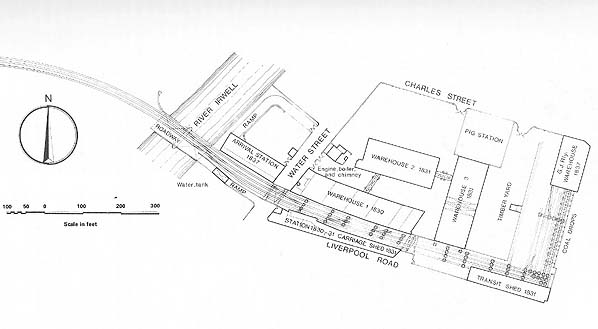|
Notes: Manchester Liverpool Road was the eastern passenger
terminus of the George Stephenson's Liverpool
and Manchester Railway which opened for business on 15.9.1830. The line was
the worlds first to be constructed with the carriage of passengers
as one of its main activities. It was also arguably the worlds
first true inter city railway.
As the line was the first of its kind a great deal of thought
was devoted to how to create passenger facilities. The only
transport hubs that existed at the time where the points from
which road coaches departed. These tended to be large inns which
could cater for passengers who might need to stay overnight
and which had stable facilities for horses. The coaching inns
did not really offer a good model for a railway terminus. The
other issue facing the lines builders was where to locate the
terminus in Manchester. The original plans for the railway would
have seen a station developed on the west side of the River
Irwell in the town of Salford. However the lines promoters wanted
to have a terminus in Manchester proper which would save passengers
from having to cross the River Irwell. A site was identified
and purchased at Liverpool Road on the western edge of the city.
To reach the site the line had to be raised up to an elevation
exceeding 29 feet so that a bridge could be built across the
Irwell which would still allow navigation by the boats of the
Irwell Navigation Company. A fine sandstone bridge consisting
of two arches was built over the river which connected to a
viaduct which was followed by another bridge which crossed a
busy thoroughfare called Water Street. This last bridge carried
the line to the site which had been chosen for the station.
An existing house was purchased on Liverpool Road and a handsome
two story stone built building was constructed next to it cater
for passengers. The house was used for the station superintendents
office. The line was level with the first story of the building.
It was reached by staircases that led up to a simple platform
which had a covered canopy to shelter passengers from the rain.
Interestingly this platform was to be used only by departing
trains. For passengers arriving at Liverpool Road a simple platform
was provided on the western side of the Water Street bridge.
At first no facilities where provided as it was assumed that
arriving passengers would quickly disperse into Manchester.
However this situation changed in 1837 when an arrival station
was built.
Passengers departing from Manchester were separated by class
with the more affluent citizens enjoying the better facilities.
The passenger facilities where small in comparison to the goods
facilities which where provided at the station A fine brick
built warehouse was provided opposite the departure platform.
Within seven years four more warehouses where added which demonstrates
the phenomenal success of the line.
By 1844 the station was far too small to cope with the passenger
numbers that where using the line. By this time trains where
travelling to more destinations than just Liverpool. A new station
opened further to the east called Victoria and Liverpool Road
closed to passengers.
The station site continued to be developed as a goods facility
and in 1905 the original Water Street Bridge was demolished
to allow widening of the street but surprisingly the former
passenger station survived mainly intact including the original
first class staircase.
In 1975 the station closed completely. However in 1980 the site
was used to celebrate the 150th anniversary of the Liverpool
and Manchester Railway. Locomotives visited from all over the
country and the local authority had the idea of creating a Science
and Industry Museum which would preserve and make good use of
the site. Today that museum known as the Manchester Museum Of
Science & Industry is a reality and visitors can view the
station site and see the first class booking hall restored to
its 1830 condition. A replica locomotive of the era 'Planet'
can regularly be seen in steam at the station site.
To see the other
closed stations on the Liverpool & Manchester Railway click
on the station name: Liverpool
Crown Street, Huyton
Quarry, Lea Green,
Collins Green,
Parkside 1st, Parkside
2nd, Kenyon
Junction, Glazebury
and Bury Lane, Flow
Moss, Astley, Lambs
Cottage, Barton
Moss 1st, Barton
Moss 2nd, Weaste,
Seedley, Cross
Lane & Ordsall
Lane
|

old7.jpg)
old10.jpg)
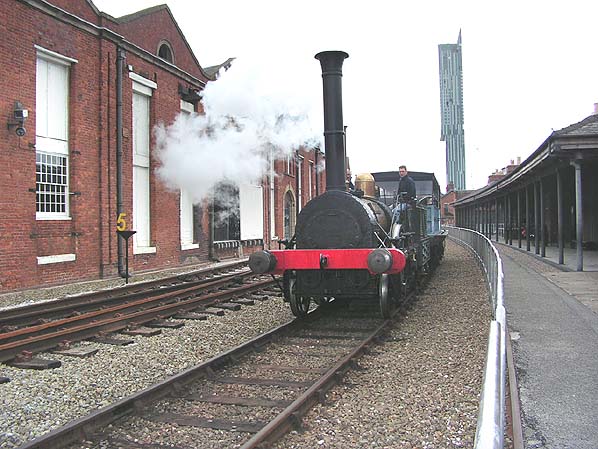
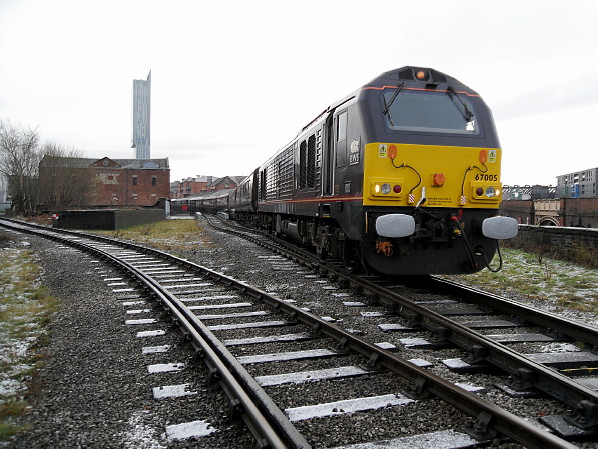
.jpg)
 Home Page
Home Page 